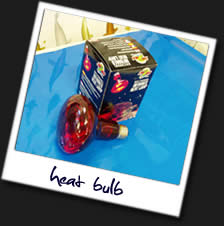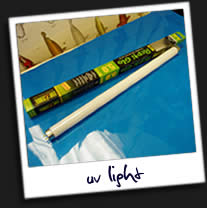www.reptiles-info.co.uk
Iguana Housing:
In order to make sure that your iguana is housed correctly, here at reptiles-info we have produced our very own guide to take you through the stages that are involved with housing an iguana from a baby to an adult.
Cage Setup:
There is a variety of ways to set up a cage for your iguana firstly you can house your iguana in an glass aquarium for the earlier stages of its life as it will out grow an aquarium within its first year. However it is an excellent option to house your iguana in the aquarium whilst you are preparing your permanent home for your pet. The cage setups that you should be looking at are large wooden enclosures with glass panels to allow you to view and access your iguana easily. Size is the most important factor when setting up your cage and this is why some people will dedicate a room in their house to an iguana giving them the perfect amount of room they need to maneuever and exercise. You can also allow your iguana to roam free around the house however you must 'iguana proof' your house by removing sharp objects, breakable items, covering plug holes and any other potential items that may be broken or injury the iguana. In order to make a successful environment for your iguana the factors that need to be covered are the cage size, heating, lighting, ventilation, decor and cleanliness and hygiene of your iguanas cage all of which are covered in detail below.
Cage Size:
When housing your iguana it is important to keep in mind the size to which your iguana can grow as when you purchase the reptile in the shop as an 8inch baby they are relatively small and can be housed in an aquarium. However iguanas grow rapidly and will outgrow a fifty-five gallon tank within its first year as they will not be able to exercise or move freely within their current conditions. The are a selection of options that are available when selecting the cage size for your iguana and you must always keep in mind that your iguana could grow up to six feet long (head to tail) the first housing option is to either let your iguana roam free around your house, meaning their is adequate size for your iguana to exercise although your house will then have to be iguana proofed. Secondly you can dedicate a room in your house to an iguana this is a much better option as the size of the room will be spacious enough to house the iguana comfortably. The third option and probably the most effective cage size would be a custom built housing of around 48inches wide x 30inches deep x 72inches high, this would be an excellent sized housing for your iguana whether the cage is brought from a company or hand made by yourself. A rule of thumb for cage size is 7ft wide x 3ft deep x 6ft tall.

Heating:
As iguana's need a warm environment to help digest their food it is imperative that your iguanas environment is heated correctly. The correct temperature for your iguana cage should be no cooler than 24C and should not exceed 35C. It is advised that you create a basking area for your iguana that can act as an area of warmth within the cage so your iguana can bask in the heat and help digest its food. The warm area of your lizards enclosure should be around 30C to 35C and can be provided by installing a ceramic heating bulb that will omit heat and warmth to the iguanas cage, this should be placed at one end of the iguanas enclosure to create the heat gradient you are looking for of a warm and cool area. When installing the ceramic heat bulb make sure it is out of reach of the iguana and it cannot burn itself on it. For More Information On Reptile Heating Click Here

Lighting:
In their natural environment iguanas are accustomed to twelve hours of light per day this is to ensure that their bodies can use the UV light rays to aid their digestion process and to gain the neccesary vitamins they need inorder to produce calcium within their bodies to prevent the onset of diseases. Therefore within your iguana's housing it is suggested that you light the area with a UV light so that your iguana can gain the necessary vitamins it needs from the light available, always remembering to only use the light for twelve hours a day to replicate the day/night cycle that the iguana needs. For More Information On Reptile Lighting Click Here
Ventilation:
As iguanas originate from a tropical environment you will have to recreate this in your iguanas housing, this can be difficult if you have selected to allow your iguana to 'free roam' around your house. If you iguana is in customised housing you can spray your reptile with water at regular intervals throughout the day this will mean that the humidity level within the tank will be correct for the iguana. A large bowl of water within the cage can also help to add to the humidity levels within the iguana's housing.

Cage Decor:
In order to give your iguanas enclosure a more natural look it is advised that you include a hide place within the housing so that the iguana can retreat behind it in order to provide a visual layer of security. The hide place can be anything as simple as a cardboard box that the iguana can hide under to live plants and branches so that the iguana can climb on and hide behind. You must also select an appropriate substrate for your iguana's housing and this can vary from a variety of materials from newspaper, paper towels and cage carpet however if you are looking for a more natural look i would advise that you use a pellet form of substrate. Water is also needed when housing your iguana and must be changed daily so the iguana can drink fresh water this also helps to add humidity to the cage.
Cage Cleanliness:
You should aim to clean the iguanas housing around once a week this should help to keep your iguana as healthy as possible also to optimize the living conditions of your iguana's housing you should replace the water daily always misting the housing as regularly as possible. Other ways to keep up the cleanliness of your cage could be to wipe the glass of the terrarium daily and also remove any of the iguana's waste every day.
Iguana Pages






